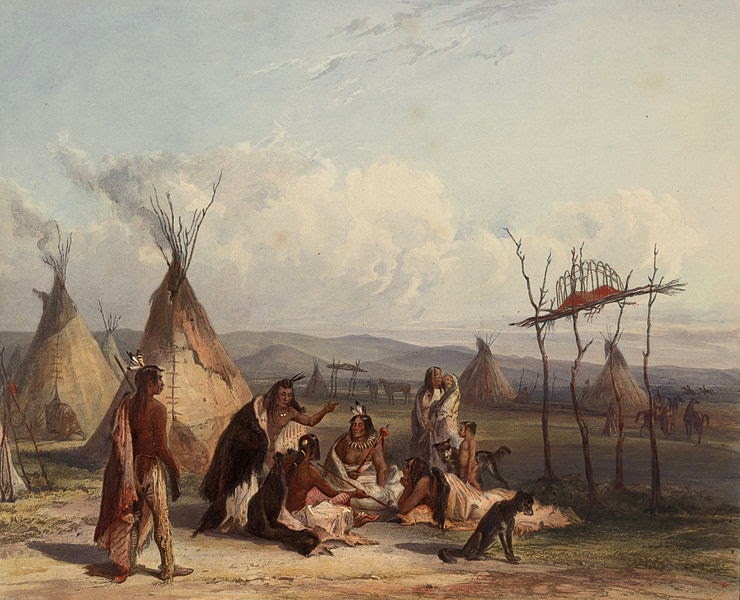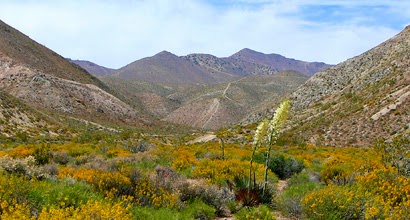 |
| If WQ saves the world, that's great; if it can only save LA, it's a start (Carren Jao/kcet.org). |
 |
| Wisdom Quarterly's native Tongva harvest: wild cucumber, mushrooms, manzanita sparkling cider, tubers, chard, and rosemary overflow from our foraging basket, Hahamongna (WQ). |
Protecting California’s Native Flora since 1965
 |
| Wisdom! |
The California Native Plant Society works hard to protect California's native plant heritage and preserve it for future generations. Our nearly 10,000 members promote native plant appreciation, research, education, and conservation through our five statewide programs and 34 regional chapters in California. More
 |
| Think of seven generations. |
The California Native Plant Wiki is an information resource created by the Foundation to help gardeners with California native plants.
The Foundation is a non-profit organization dedicated to promoting the use and understanding of California's extraordinary flora. Consider becoming a member or donating to support this service.
The Foundation is a non-profit organization dedicated to promoting the use and understanding of California's extraordinary flora. Consider becoming a member or donating to support this service.
 |
| Native home garden tour April 5-6, 10 am-5 pm, $15 (nativeplantgardentour.org) |
- California Native Plant Week: April 12-20, 2014
- CNPS Workshop Calendar / Sponsored
- Chapter-Based Sampling Workshops
- Upcoming Chapter Council meetings
Across California, invasive plants damage wildlands
 |
| This tincture is a foot rub (Arroyo Sage/ASF) |
Invasives displace native plants and wildlife, increase wildfires and floods, consume valuable water, degrade recreational opportunities, and destroy productive range and timber lands. Cal-IPC works with land managers, researchers, policy makers, and concerned citizens to protect the state from invasive plants. More
 |
| Healing (Garcia & Adams) |
Native Sanctuary expresses Orchid Black’s vision of a restored web of life in California starting with unique plants, which are among the most beautiful and ignored features of the Golden State. As a garden designer offering native plant consulting, habitat creation, and sustainable design services in the greater Los Angeles area, Orchid Black writes and lectures about native plants, water-saving strategies, and sustainable gardening.
| Meanwhile, on the other coast, The New York Botanical Garden is always blooming! |
Cowboys and Indians
Dhr. Seven, Amber Larson, Wisdom Quarterly (COMMENTARY)
 |
| The Buddhist practices of "Dream Yoga" could awaken everyone (Dr. Michael Katz) |
 |
| Read excerpts |
Of course, this world -- this Eden -- is not just a garden. It is made of more than mycelium, flowers, plants, vines, and trees. This is the karmic playground of humans, faeries (bhumi-devas), giants (yakkhas), trolls (kumbhandas), ghouls (petas), many visitors (akasha-devas), and worse (maras).
So we have to learn to get along, even if there was a genocide, and no one is saying there was, except maybe historians.
 |
| Native funeral scaffold (Karl Bodmer) |
Those poor cowboys were almost wiped out as the trickster Injuns tried to cross their barb wired properties -- for which they had papers saying the land suddenly belonged to them. Maybe it was the way Redskins got in the way when red-blooded British expats, now calling this land their land, started a mass slaughter of the buffalo, replacing hearty, well adapted bison with needy bovines and scavenging porcines. Or who can forget the way they gave us those free blankets that time?
 |
| Expanse of rugged California flowers: desert senna and chaparral yucca in Western Mojave Desert (Amber Swanson/cnps.org) |
We can dream
Chogyal Namkhai Norbu, James Valby (trans.), Dr. Michael Katz (ed.)
 It has been nearly a decade since the publication of the first edition of Dream Yoga and the Practice of Natural Light. Recently, Chogyal Namkhai Norbu proposed we enhance the original version with additional material from a profound and personal Dzogchen book he has been writing for years. It is a great honor to edit this material since no part of the new manuscript has previously been made public.
It has been nearly a decade since the publication of the first edition of Dream Yoga and the Practice of Natural Light. Recently, Chogyal Namkhai Norbu proposed we enhance the original version with additional material from a profound and personal Dzogchen book he has been writing for years. It is a great honor to edit this material since no part of the new manuscript has previously been made public.
Pertinent material drawn from it has been translated by James Valby from the original Tibetan. It expands and deepens the first edition’s emphasis on specific exercises to develop awareness within the dream and sleep states.
 |
| Never too early for Midsummer Night's Dream |
In the manuscript Chogyal Namkhai Norbu has included specific methods for training, transforming, dissolving, disordering, stabilizing, essentializing, holding, and reversing dreams. In addition, he has presented practices for maintaining one’s practice throughout all moments of the day and night. The revision also includes a practice to develop the illusory body, methods for transference of consciousness at the time of death, and profound clear light practices for developing contemplation. More
- Native American Buddhism: The Ghost Dance
- 5 things people probably don't know about Beverly Hills
- Ben Sherwood replaces Sweeney as Disney chairman
- ABC Family pilot "Alice in Arabia" pulled after backlash
- When Hollywood advocates, should people listen?
- Helicopter noise: Lawmakers express disappointment to FAA
- Weekend Traffic: 405, 91, Foothill Bl. to see closures























































































































































































































































No comments:
Post a Comment